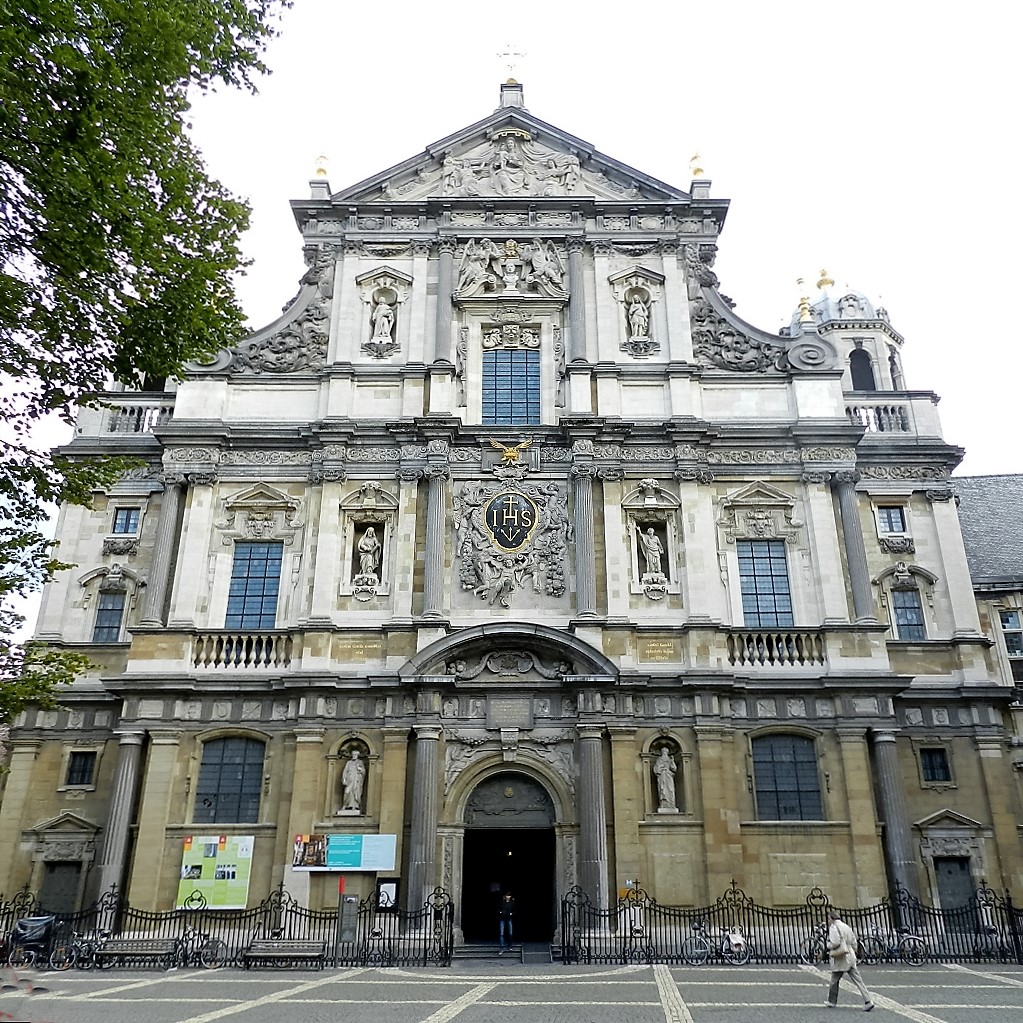The Antwerp jesuit church, a revelation.
Epîlogue
The Jesuit order in Antwerp since 1835
Because the papal decision to abolish the Jesuit order (1773) did not reach a number of regions in the world (the Near East, China, India) or was not acknowledged (Prussia, Russia) a small residue of the Society kept existing. In 1814 this lead to the restoration of the order by Pope Pius VII. Very soon the number of Society members increased and they could resume many of their former activities. This happened also in Belgium, Flanders, Antwerp.
In 1834 the Jesuits preached a big mission in their former church in Antwerp. And in 1835 they had a residence in Antwerp again. In 1840, they bought back a part of the former professed house, where in 1852 they founded the new technical and commercial high school Saint-Ignatius, with its entrance in Korte Nieuwstraat.
In the same year, 1840, they started Our Lady’s College in Keizerstraat, which was transferred to Kunstlei, the present Frankrijklei, in 1878. There a new Jesuit Church (1877-82) was built, not in the so-called “Jesuit style”, but in fashionable neo-Gothic. This church, devoted to Our Lady of Mercy, was designed by Jules Bilmeyer. The two towers, which contribute to the townscape, were only added in 1909-10.
The Jesuits acquired Mariënborgh back in 1856. Because the urban extension made it impossible to experience rural quietness there, they moved to a new plot on the border between Wilrijk and Edegem, which they also called ‘Mariënborgh’.
And yes, history was repeated almost completely: in 1929, the Jesuits became again the owners of ‘Hof van Liere’, which they had fully restored by their own means. They housed the Commercial High School there, which later became the University Faculties Saint-Ignatius Antwerp (UFSIA). In 1932, they left Korte Nieuwstraat, where the Sisters of Charity took over to start the Commercial High School for girls. Due to the fusion with the Flemish Catholic High School, it is now part of Lessius High School Antwerp, named after the Jesuit and Louvain professor († 1622), for whom economics could only pay if linked with ethical reflection. The campus ‘Carolus’ in Korte Nieuwstraat takes its name from the nearby SaintThis is a title that the Church bestows on a deceased person who has lived a particularly righteous and faithful life. In the Roman Catholic and Orthodox Church, saints may be venerated (not worshipped). Several saints are also martyrs. Charles Borromeo Church.
In 1935 a second college was founded in the Antwerp conurbation: the Dutch speaking Saint Xavier College in Borgerhout.
The Bollandists restarted in Brussels, whereas in Antwerp since 1925 the Ruusbroec Society has been devoting itself to the history of spirituality in the Low Countries.
The new Jesuit house next to the university buildings in Prinsstraat answers to the name Romero, the socially conscious archbishopThe bishop in charge of the archdiocese. In actual practice, this also means that he is the head of the church province. – martyrSomeone who refused to renounce his/her faith and was therefore killed. Many martyrs are also saints. of El Salvador († 1987): not a member of the Society, but someone who had a strong bond with the socially conscious Jesuits of his country.
In 2002 UFSIA was completely absorbed by the pluralistic Antwerp University. The University Centre Saint Ignatius Antwerp (UCSIA) wants to continue the tradition of a Jesuit university project that focuses on themes that want to give special shape to the Christian view on life. In this way, it wants to be of service for faith and culture and to contribute to a more just society.

